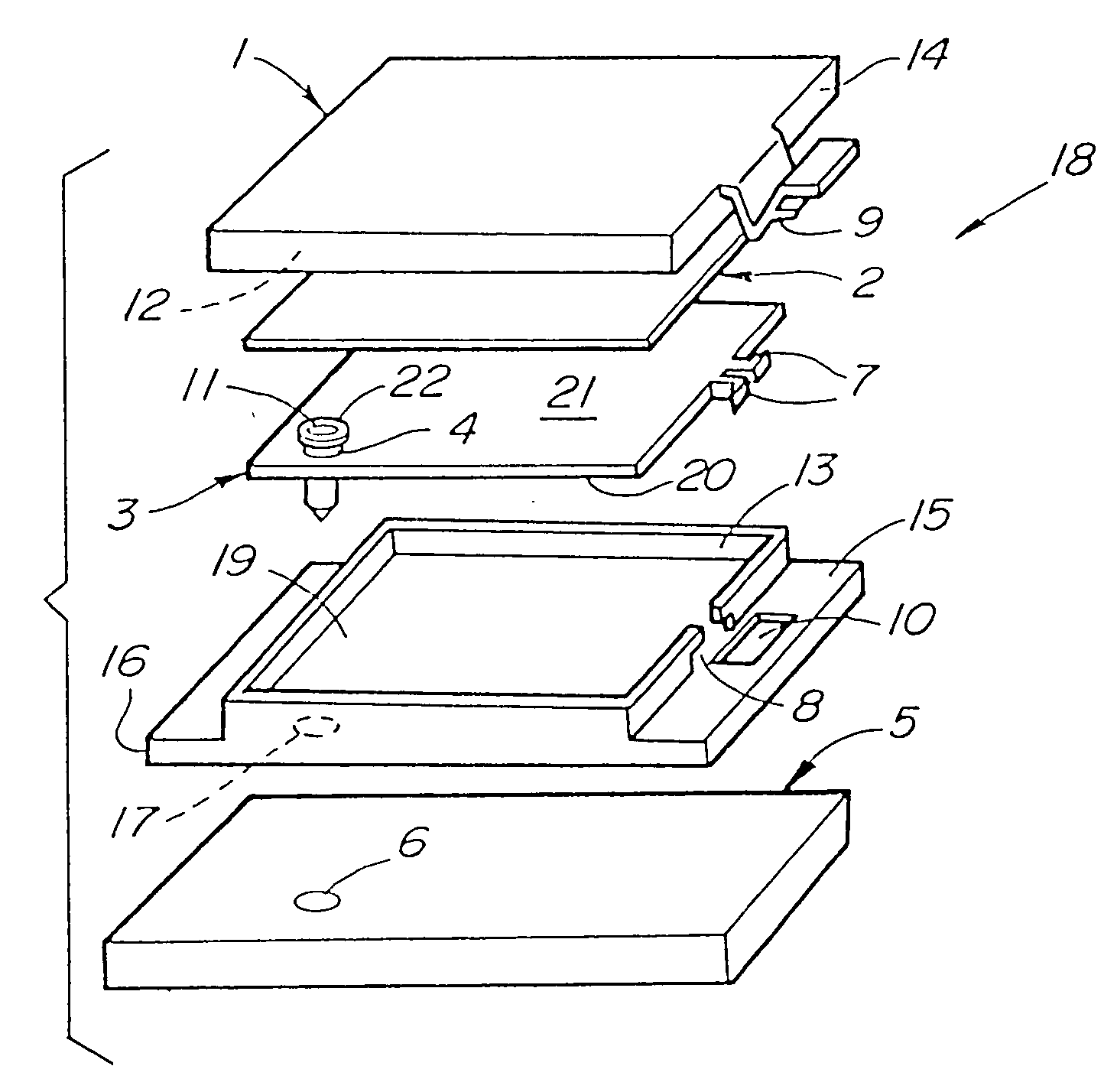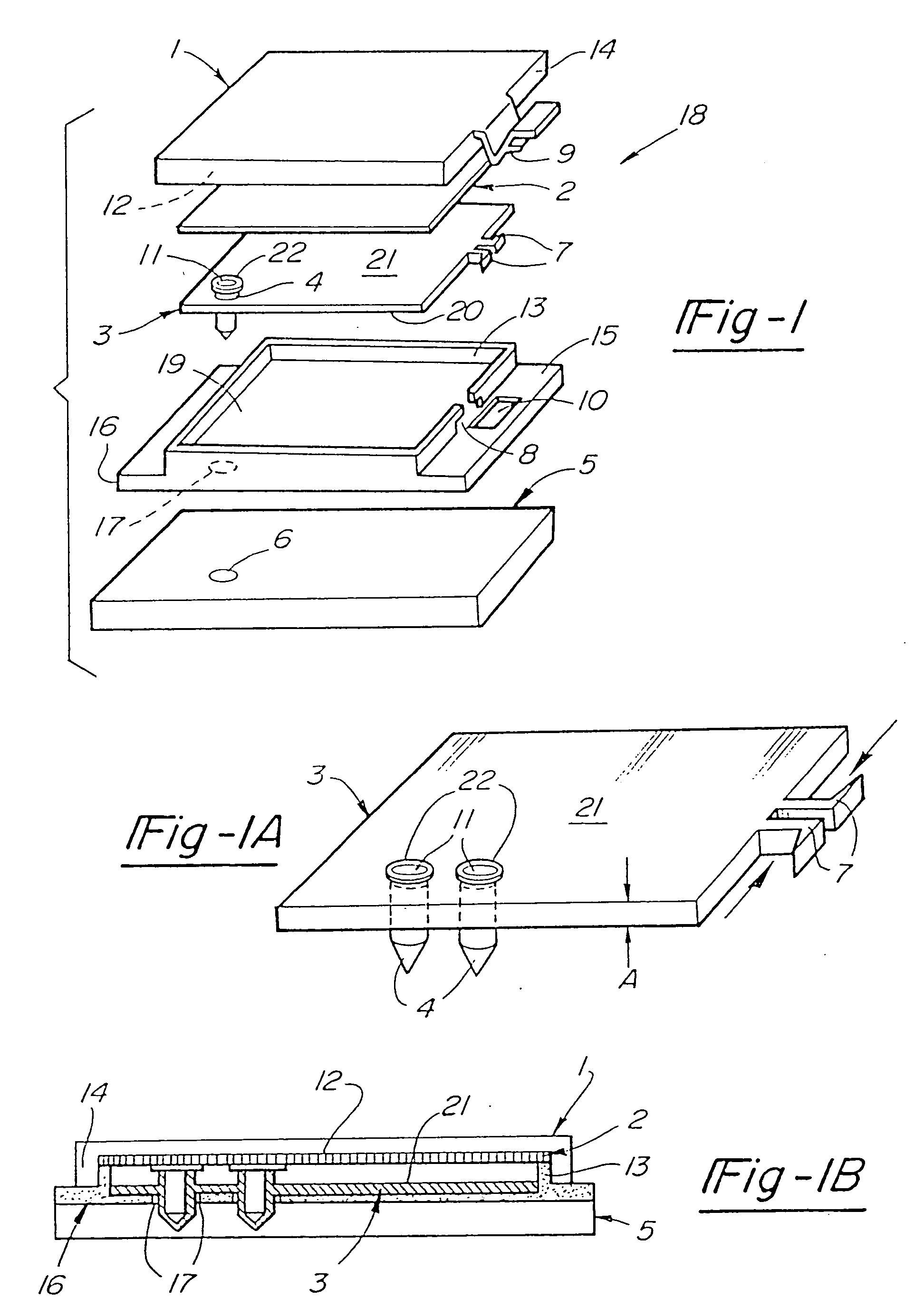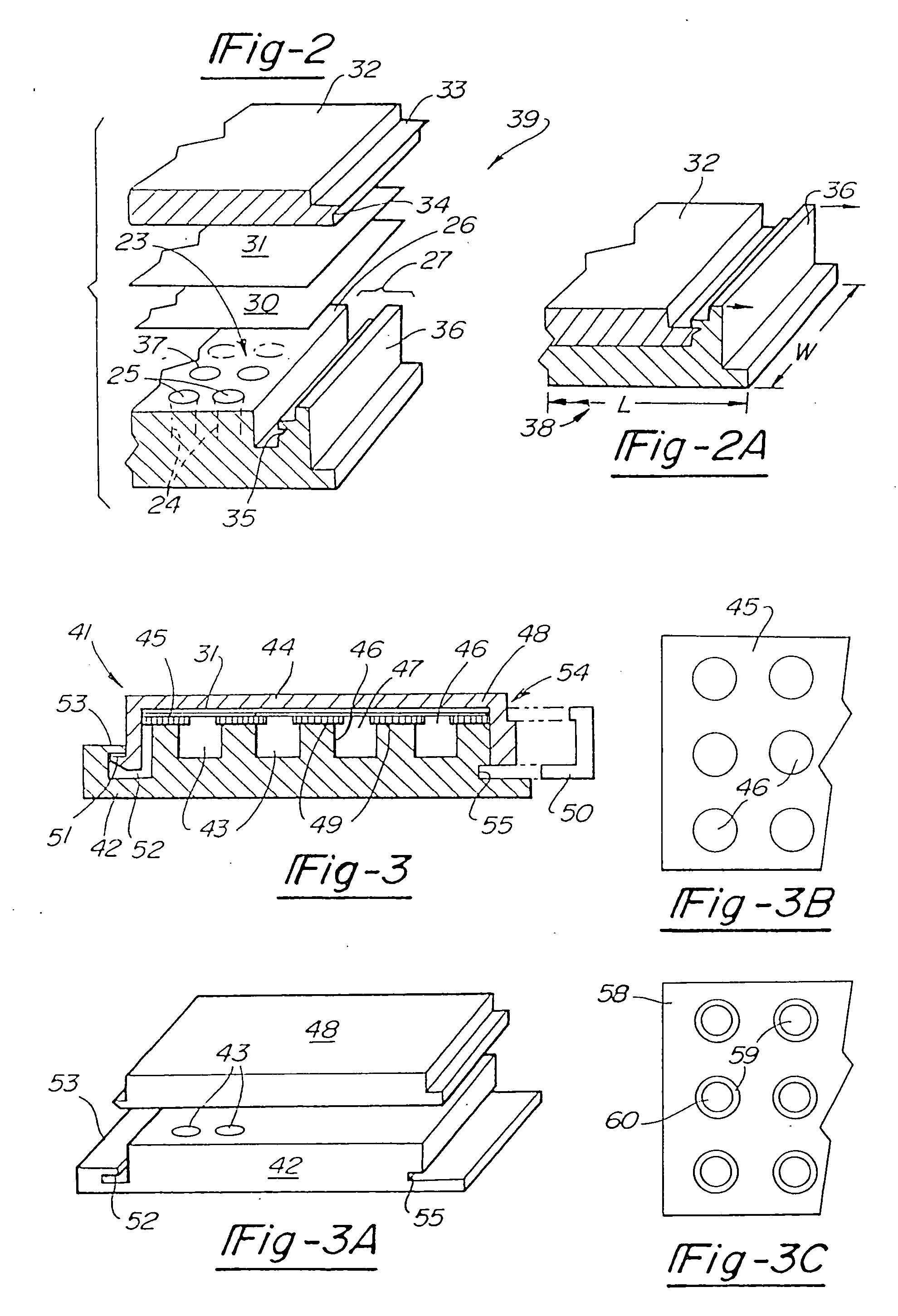Method and apparatus for preventing cross-contamination of multi-well test plates
a multi-well test plate and cross-contamination technology, applied in the field of multi-well test plate and tube array, can solve the problems of significant cross-contamination risk of samples, inconvenient sealing of the tops of wells, and inability to reliably use tapes
- Summary
- Abstract
- Description
- Claims
- Application Information
AI Technical Summary
Benefits of technology
Problems solved by technology
Method used
Image
Examples
Embodiment Construction
[0045] Referring to FIG. 1 of the drawings, in one embodiment assembly 18 is shown with tube tray 3 having a plurality of tubes 4, only one of which is shown in FIG. 1 for the sake of clarity. Each tube 4 is provided with an opening or mouth 11. It will be appreciated that tray 3 may be formed as an integral or single-piece structure having tubes 4 or that tubes 4 may be formed as discrete units which are subsequently attached to tube tray 3 either temporarily or permanently. For example, tube tray 3 could comprise a plate with plurality of openings in which tubes 4 are held in the nature of a test-tube rack, with a holding or retaining plate being fixed reversibly and temporarily to the plate thereby holding the tubes in place. Tube tray 3 is preferably placed in tray carrier 16 having a principal surface 19 which mates with lower surface 20 of tube tray 3. Portions of tubes 4 which extend below lower surface 20 are received through holes 17 of tray carrier 16 into bores 6 of base ...
PUM
 Login to View More
Login to View More Abstract
Description
Claims
Application Information
 Login to View More
Login to View More - R&D
- Intellectual Property
- Life Sciences
- Materials
- Tech Scout
- Unparalleled Data Quality
- Higher Quality Content
- 60% Fewer Hallucinations
Browse by: Latest US Patents, China's latest patents, Technical Efficacy Thesaurus, Application Domain, Technology Topic, Popular Technical Reports.
© 2025 PatSnap. All rights reserved.Legal|Privacy policy|Modern Slavery Act Transparency Statement|Sitemap|About US| Contact US: help@patsnap.com



